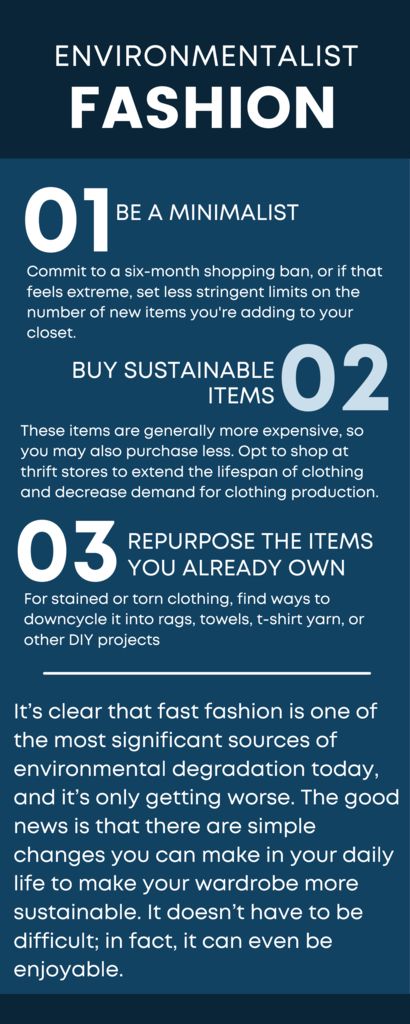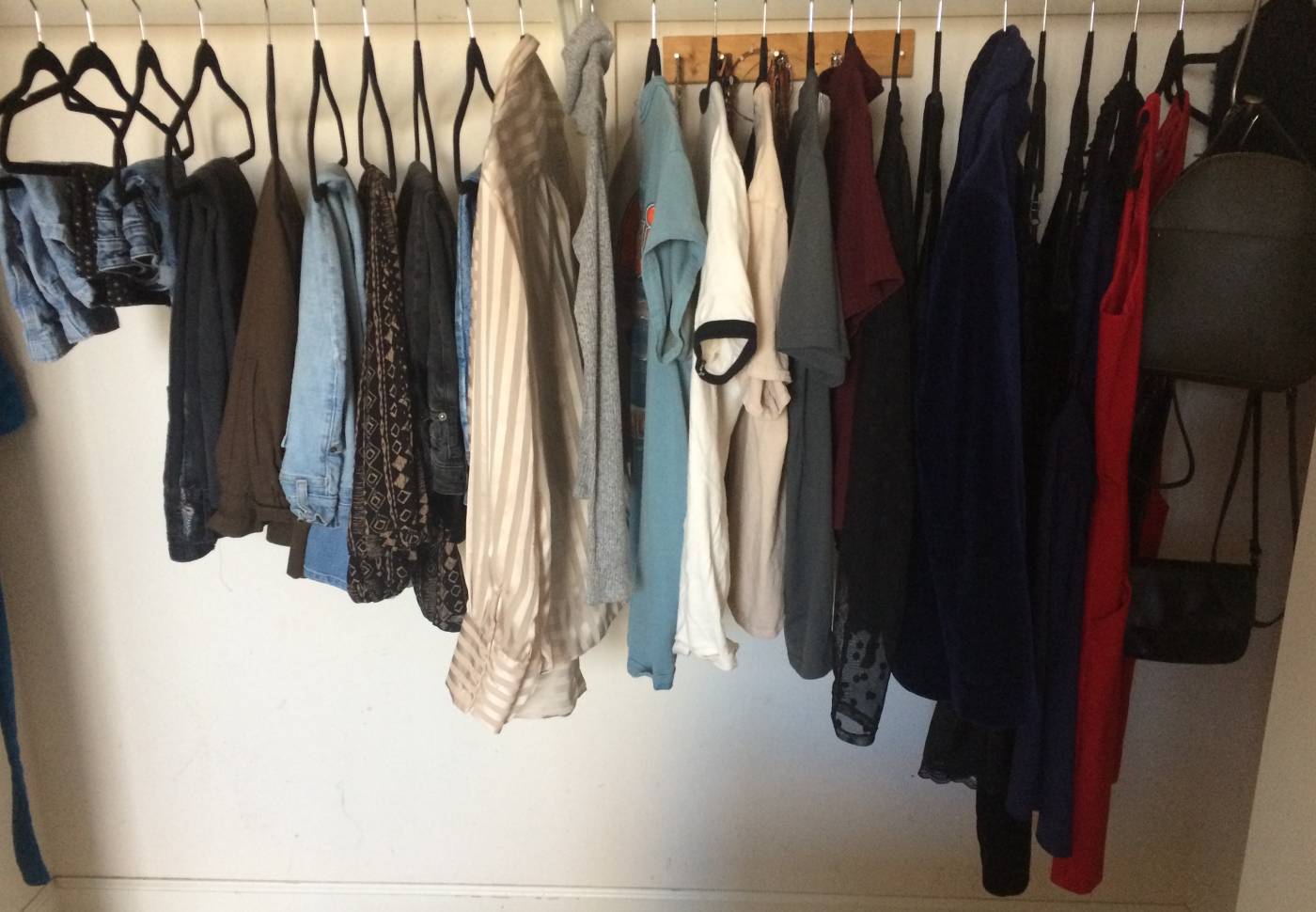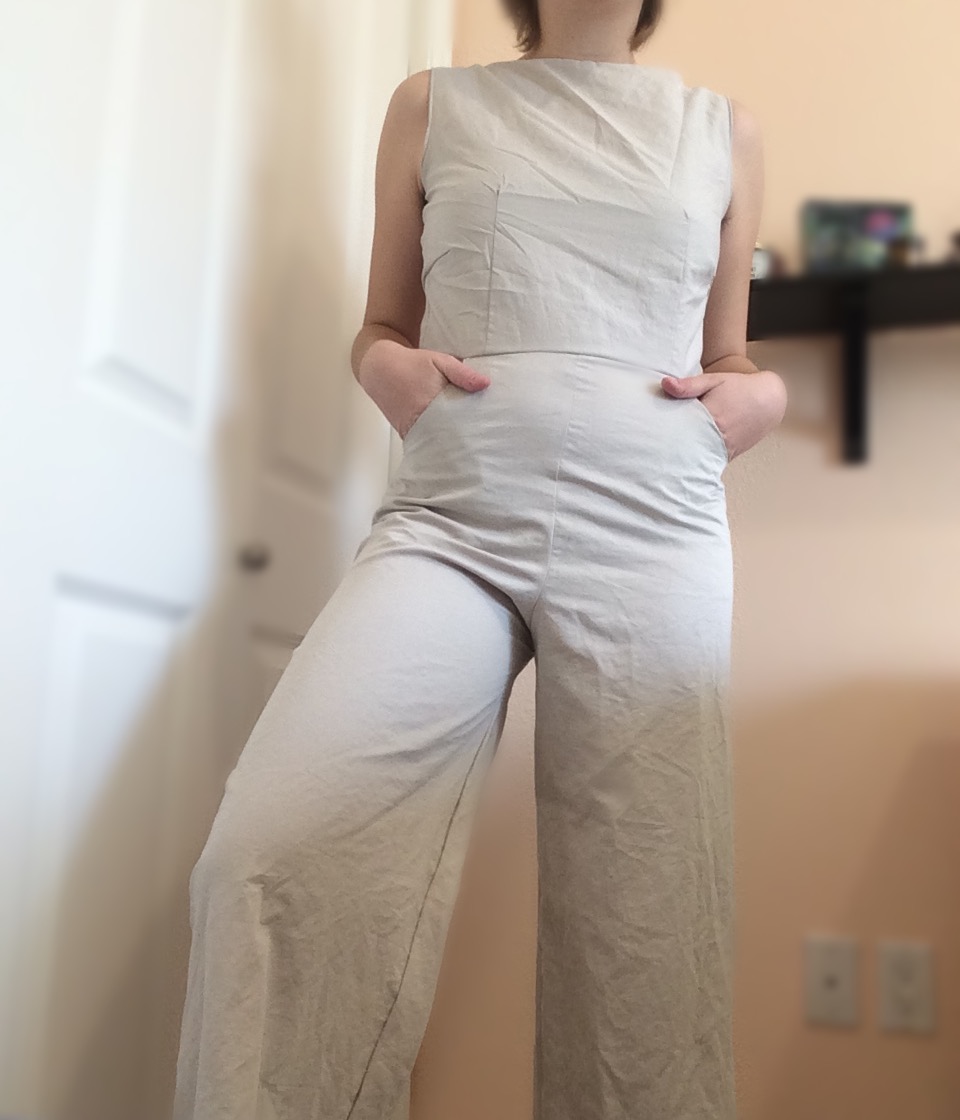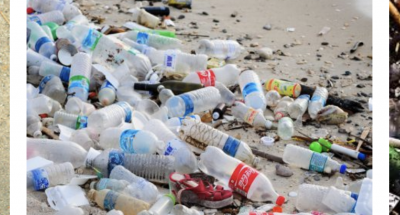The Environmental Impact of Fast Fashion and What You Can Do
As a teenager, I enjoyed shopping at the mall, hopping from Forever 21 to H&M to the sales section at Urban Outfitters and Pacsun, buying a pretzel along the way. It was a place to hang out with friends, or spend time with my mom and sister, while we dug through racks of flimsy clothing. I was a germaphobe at the time, and hadn’t stepped foot in a thrift store in years, and although I did care about the environment, I didn’t know anything about fast fashion or its detrimental impact on the environment.

Photo by Fernand De Canne on Unsplash
Although I’ve stopped buying new clothing and started exclusively frequenting thrift stores in the past few years, this year I wanted to completely reset my relationship with shopping. I wanted to be more intentional about what clothing I added to my wardrobe, where it was coming from, and where it went when I was finished with it.
I had toyed with the idea of a shopping ban, and when New Years rolled around, I decided it was time to make it official. For my New Year’s Resolution this year, I committed to refraining from buying any clothing for six months.
I am a firm believer in the power of voting with your dollar; in a capitalist society, money is a massive policymaker. If consumers stopped supporting the fast fashion industry, these companies would be forced to adapt or wither away into nothing. Obviously, that’s not the only way to work towards these policies, but what I like about voting with your dollar is that it’s easy to incorporate into your everyday life. For me, that means shopping at thrift stores, but if you have the money and time to research sustainable brands, that’s another great option.
A Changing Industry
The clothing industry has gone through massive changes in the last few decades. People buy more clothes and throw them out sooner than they ever did in the past–on average, a piece of clothing is only worn 7 times today. Before the 60s, people generally still relied upon garments tailor-made from high quality natural fibers. But in the decades since, fast fashion has become increasingly prevalent, bringing with it cheaply made garments in artificial fabrics which wear out easily.
Although the production of these garments takes an enormous environmental toll and uses up thousands of liters of water, even worse is what happens after. When washed, synthetic materials release microplastics into the ocean, and once they’ve been tossed out, they can take hundreds of years to decompose in a landfill, continuing to release greenhouse gasses. All told, fashion is responsible for 10% of global carbon emissions.
The cost of clothing has plummeted, or so it seems. But when you consider the hidden costs, both to the environment and to the workers, it’s clear that we are paying more than ever for our garments; we just aren’t paying with money. Instead, we’re paying with the purity of our water and natural resources, and with the health of workers in sweatshops in other countries. That $15 top may seem like a great deal, but you can’t take that price at face value.
The speed at which fast fashion is produced and disseminated also means that instead of the two fashion seasons of decades past, there are around 50 “microseasons”, each with new trends. This means that clothing feels dated faster and people are compelled to buy more pieces than ever before to keep up with current styles.
You might think donating your clothes instead of throwing them out will solve the problem–if someone else can get use out of your old garment, what’s the harm? But at the current rate, the demand will never be able to keep up with the amount of clothing that is donated every year. Hundreds of tons of clothes are sent to foreign countries, wreaking havoc on local economies. And in the end, 80% of textiles globally end up in the landfill, emitting greenhouse gasses for hundreds of years as they decompose.

Minimalism
So what can we do about it? In my opinion, the most important thing we can do as individuals in the fight against fast fashion is to stop buying it. Reducing the amount of clothing you buy is a great start, if cutting out fast fashion completely is daunting. Thrift shopping is a great alternative that is environmentally sustainable and also accessible due to its relatively low cost. If you have a higher budget, supporting green brands is another great option. Just make sure you avoid greenwashed brands that market themselves as sustainable without any action to back it up.
This year, I’ve chosen minimalism as my answer to the horrors of fast fashion. Minimalism isn’t necessarily strictly about owning less stuff. That’s part of it, but for me what’s most important is being deliberate and intentional about everything you buy. Everything that you own should be adding value to your life in some way. In most wardrobes today, we wear 20% of our clothing, 80% of the time. So why do we need so many pieces? What value is that clutter adding to our lives? Most likely, it’s adding more stress than anything.
Over the last few months, I’ve greatly downsized my clothing, and almost entirely stopped purchasing clothes. This New Years, I took it to the next level by committing to a six month fashion ban. During that time, I won’t purchase any new clothes at all, and I will focus on getting more use out of and appreciating the items that I have. Overall, my goal is to change my relationship with shopping and ensure that in the future, I’m not buying more than I really need.

Annie Worford’s entire minimalist wardrobe (40 pieces of clothing).
What you can do
A six month shopping ban is great, but the best change you can make is the change that’s sustainable for you. Here’s a few less extreme ways you can impact the fast fashion industry on a daily basis in your own life.
-Buy less clothes. A general idea of your goal is a good start, but to make change in your life you should set real, measurable goals you can track, such as “only buy 2 clothing items a month.” If that sounds like too much to you, remember that you can always start small and progressively change your monthly goals.
-Stop or cut down on supporting fast fashion. Again, use measurable goals if your plan is to cut down instead of stopping completely.
-Buy secondhand. This is my favorite method because it prolongs the lifespan of donated clothes—plus you can find unique or vintage items you might never find anywhere else. Finally, thrift stores generally provide affordable options.
-Buy sustainable items. (The other great side effect of this may be that because these items are generally more expensive, you may purchase less.)
-Wear each item of clothing you own more times before you get rid of it. Find new ways to wear the items you already own. Tracking what you actually wear will also make you more aware of what you buy but don’t need or use.
-If you can, find a way to sell your clothes online or give them to a friend when you’re done with them, so that you can prolong their lifespan and keep them from ending up in a landfill.
-For stained or torn clothing, find ways to downcycle it into rags, towels, t-shirt yarn, or other DIY projects.

A jumpsuit Annie Worford made from an old ripped sheet
Conclusion
It’s clear that fast fashion is one of the most significant sources of environmental degradation today, and it’s only getting worse. The good news is that there are simple changes you can make in your daily life to make your wardrobe more sustainable. It doesn’t have to be difficult; in fact, it can even be enjoyable. (Read about how I developed my minimalist wardrobe and committed to a fashion ban here.)
Additional Sources:
We need to talk about….the environmental impact of our fashion addiction









